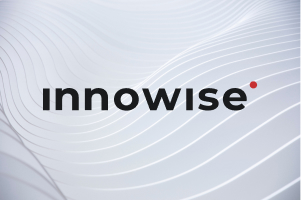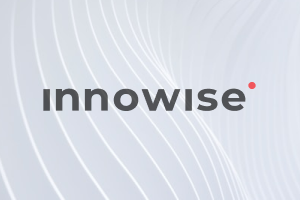Your message has been sent.
We’ll process your request and contact you back as soon as possible.
The form has been successfully submitted.
Please find further information in your mailbox.


Partner with Innowise to transform fragmented healthcare data into unified, actionable insights and value-based care through seamless EHR integration, AI-driven analytics, real-time IoT data, and predictive models.
Partner with Innowise to transform fragmented healthcare data into unified, actionable insights and value-based care through seamless EHR integration, AI-driven analytics, real-time IoT data, and predictive models.
Innowise’s custom PHM platforms are designed to address the key pain points in today’s population health management.
Integrate disparate systems into a unified data platform that consolidates all sources, giving care teams a complete, real-time view of patient information to enhance coordination.
Harness real-time data streams from wearables, remote monitors, and live dashboards so clinicians can monitor population health indicators continuously, with early warnings (e.g. a consistently high glucose level) triggering proactive interventions before conditions worsen.
Identify high-risk patients early and optimize interventions to lower avoidable hospitalizations and readmissions.
Implement patient-facing tools (portals, mobile apps, messaging) that empower individuals to actively manage their health, resulting in higher treatment adherence and healthier lifestyle choices.
Build compliance and privacy into every layer of your PHM platform with end-to-end encryption, access controls, and continuous monitoring that safeguard PHI and maintain regulatory confidence.
Leverage a cloud-ready infrastructure built for scale, performance, and resilience, easily onboarding new clinics or thousands of connected devices without disruption.
Our population health management platforms are feature-rich and tailored to your needs, incorporating all the critical functionalities required to manage population health effectively. Each feature is designed with deep technical insight and a focus on user value.
We leverage advanced analytics to categorize patient populations by risk level. By analyzing clinical data and social determinants, the software identifies high-risk individuals and stratifies groups with similar health profiles. This risk scoring allows care teams to prioritize interventions for the patients who need them most. No one “falls through the cracks” — every high-risk patient is flagged for proactive outreach and preventive care.

Our PHM solutions break down silos with unified care coordination dashboards that give care teams a 360° view of patient health status and activities. These dashboards aggregate data from across providers to present an up-to-date, shared care plan. This leads to smoother transitions of care and more efficient, team-based healthcare delivery.

We embed AI-driven predictive modeling into our PHM software to turn raw data into actionable foresight. Our analytics tools crunch historical and real-time data to identify trends and predict potential health events. Predictive models also help uncover patterns across the population. With these insights, healthcare organizations can implement targeted prevention programs and allocate resources more effectively.

Our platforms integrate with Internet of Things (IoT) health devices to enable real-time remote patient monitoring. Wearables and home health devices stream data continuously into the PHM system. The software generates instant alerts and notifications for care teams if any readings fall outside safe ranges. These timely alerts facilitate early interventions before a situation escalates.

Our PHM software employs enterprise-grade security measures to protect sensitive health information at all times. All data is encrypted both in transit and at rest, user access is controlled via role-based permissions, and detailed audit logs track all system activity. We build our solutions to be fully HIPAA and GDPR compliant from day one, following industry standards like HITRUST CSF and ISO 27001 for information security.

We ensure that your software integrates smoothly with your existing EHR, EMR, and other health IT systems. Utilizing standards like HL7 v2 and FHIR, our team connects the PHM platform to clinical data sources so information flows bi-directionally without disruption.

We build robust data integration pipelines that collect and unify information from electronic health records, health information exchanges, claims systems, pharmacy systems, lab systems, and even consumer apps or devices.

Our PHM solutions include intuitive patient engagement tools that connect patients with their care and caregivers. We develop patient web portals and mobile applications that are HIPAA-compliant and user-friendly so patients can actively participate in managing their health.

We leverage advanced analytics to categorize patient populations by risk level. By analyzing clinical data and social determinants, the software identifies high-risk individuals and stratifies groups with similar health profiles. This risk scoring allows care teams to prioritize interventions for the patients who need them most. No one “falls through the cracks” — every high-risk patient is flagged for proactive outreach and preventive care.

Our PHM solutions break down silos with unified care coordination dashboards that give care teams a 360° view of patient health status and activities. These dashboards aggregate data from across providers to present an up-to-date, shared care plan. This leads to smoother transitions of care and more efficient, team-based healthcare delivery.

We embed AI-driven predictive modeling into our PHM software to turn raw data into actionable foresight. Our analytics tools crunch historical and real-time data to identify trends and predict potential health events. Predictive models also help uncover patterns across the population. With these insights, healthcare organizations can implement targeted prevention programs and allocate resources more effectively.

Our platforms integrate with Internet of Things (IoT) health devices to enable real-time remote patient monitoring. Wearables and home health devices stream data continuously into the PHM system. The software generates instant alerts and notifications for care teams if any readings fall outside safe ranges. These timely alerts facilitate early interventions before a situation escalates.

Our PHM software employs enterprise-grade security measures to protect sensitive health information at all times. All data is encrypted both in transit and at rest, user access is controlled via role-based permissions, and detailed audit logs track all system activity. We build our solutions to be fully HIPAA and GDPR compliant from day one, following industry standards like HITRUST CSF and ISO 27001 for information security.

We ensure that your software integrates smoothly with your existing EHR, EMR, and other health IT systems. Utilizing standards like HL7 v2 and FHIR, our team connects the PHM platform to clinical data sources so information flows bi-directionally without disruption.

We build robust data integration pipelines that collect and unify information from electronic health records, health information exchanges, claims systems, pharmacy systems, lab systems, and even consumer apps or devices.

Our PHM solutions include intuitive patient engagement tools that connect patients with their care and caregivers. We develop patient web portals and mobile applications that are HIPAA-compliant and user-friendly so patients can actively participate in managing their health.

Innowise actively implements IoT, big data, and AI to transform PHM software from basic data repositories into intelligent, proactive health management platforms.
IoT extends care into patients’ homes and daily lives. By continuously capturing vitals and context, your care teams can move from episodic check-ins to always-on visibility. Our approach prioritizes device reliability, standards-based data exchange, and alerting so clinicians can act quickly without added cognitive load.
Population health succeeds when every relevant data point — clinical, claims, social determinants, device streams, and patient-reported outcomes — is centralized, governed, and analytics-ready. We design lakehouse patterns and governance that balance speed with trust so operational teams and clinicians can rely on numbers for better, more-informed decisions.
AI shifts PHM from descriptive to predictive and prescriptive. By scoring risk, detecting care gaps, and tailoring engagement, models help clinicians focus on the patients who need attention now. We build explainable, governable models with clinical validation and continuous monitoring so you can trust AI in daily care decisions.

Population health succeeds when it is clinically light and financially visible. We help teams translate value‑based goals into a few simple workflows: prioritize high‑risk patients, close care gaps, automate outreach, and surface next‑best actions. We then prove lift on readmissions and cost per member before scaling. The result is a program clinicians adopt because it saves time, and leaders back because the ROI is measured, governed, and secure.
We use a proven 4‑step process that aligns stakeholders early, derisks integrations, and gets clinicians productive fast.
Aligning goals, scope, and KPIs through workshops and stack audits. You begin with a prioritized roadmap and a business case tied to value-based performance metrics.
Defining the target architecture and data models, drafting integration contracts (FHIR/HL7 v2/APIs), and validating UX with clinicians. Teams make decisions with a working prototype or PoV that reduces rework and locks in usability early.
Building ingestion pipelines, MPIs, analytics services, and care modules while integrating EHR/HIE/labs/devices and enforcing enterprise-grade security controls. You get a production‑ready PHM foundation tested for performance and security and rolled out with minimal disruption.
Enabling adoption with role‑based training, go‑live support, SLAs, and MLOps that monitor overall operational health. The platform keeps improving through impact‑driven enhancements without derailing daily care.
These snapshots show how we turn population health strategy into working software that clinicians adopt and leaders can measure.
Choose a PHM partner grounded in regulated healthcare delivery to build a platform clinicians adopt, auditors trust, and operations rely on every day.
Bring GLP/GCP/GMP thinking to PHM so documentation and data flows stand up to scrutiny. Expect traceability, change control, and auditable processes from discovery to go‑live, not as an afterthought.
Augment your team with interdisciplinary specialists from our in‑house pool (data engineers, ML/AI, bioinformatics, clinical analytics). Scale up or down quickly to match milestones and keep momentum without long hiring cycles.
Move beyond pilots with model versioning, monitoring, explainability, bias checks, and human‑in‑the‑loop review. You maintain oversight while models power risk scoring, care‑gap detection, and outreach at scale.
Start with a narrowly scoped use case tied to value‑based metrics, demonstrate lift, and expand in measured increments. This minimizes risk and builds internal confidence with evidence.
Engage us for end‑to‑end delivery or embed dedicated engineers and scientists alongside your team. The model adapts to your roadmap, budget, and velocity targets so you stay in control.

It was a very intense and effective collaboration, all the developers were focused on the goals and prepared about all the technologies we cover.

What I found most impressive about Innowise was their ability to adapt to our specific needs while maintaining strict timelines. They combined a customer-centric approach with strong project management skills, ensuring that deliverables were of high quality and on time.

We are impressed with their flexibility and willingness to find solutions for challenging situations. They actively assisted in every kind of situation. The team's willingness to deliver optimal results ensures the partnership's success.
Population health management (PHM) software aggregates clinical and non‑clinical data to reveal risks and opportunities across defined groups, then operationalizes that insight through care coordination, outreach, and reporting. In practice, this lets you stratify patients by risk, close care gaps, and measure outcomes against value‑based goals while keeping clinicians in their workflow.
Yes. We design for interoperability from the start, using HL7 FHIR, HL7 v2, and vendor APIs to sync demographics, problems, medications, labs, encounters, and care plans. Integration can be bi‑directional so risk scores and next‑best actions surface in the clinician’s EHR while PHM consumes updates with minimal lag.
Effective PHM benefits all stakeholders. Providers gain earlier visibility into deterioration and gaps in care. Care managers focus on the right patients at the right time. Payers control avoidable costs with data‑driven programs. Patients receive proactive, coordinated support that leads to better outcomes and satisfaction.
EHR/EMR data, HIE feeds, payer claims, labs, pharmacy, imaging metadata, device and RPM streams, patient‑reported outcomes, social determinants, and public health datasets. Value comes from normalizing these inputs into a longitudinal record that analytics and care teams can trust.
Feel free to book a call and get all the answers you need.
Book a callYour message has been sent.
We’ll process your request and contact you back as soon as possible.